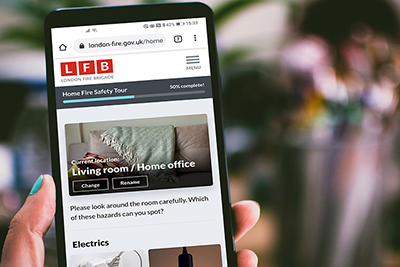There are a number of health and lifestyle behaviours that increase the likelihood of being involved in a fire.
If these factors apply to someone you care for, it's important to make sure appropriate measures are taken so they know what to do in the event of a fire in their home, and react appropriately.
We go into more detail in the next section. There is a separate page for healthcare equipment including oxygen therapy, dynamic airflow pressure relieving mattresses and incontinence products – and there is specialist advice to support you if you care for a person who is a smoker, or someone who has hoarding disorder.
Let's take a closer look at the of health and lifestyle factors that increase a person's vulnerability to fire risk.
There are a number of factors that increase a person's risk of a fire starting:
These factors might mean a person might not be able to react as quickly in the event of a fire.
Some people might not be able to escape a fire as quickly as other, due to factors such as:
If you know or work directly with anyone who has any combination of the risk factors, please encourage them to arrange a free home fire safety visit. Visits can be arranged at any time (24/7), and specialist alarms can also be fitted – for example, strobe light and vibrating pad alarms for those who are deaf or hard of hearing.
If any of these signs are combined with limited mobility – for example, if the person you care for is bed bound or spends most of their time in a chair – the person is particularly at risk. It's important to make sure appropriate measures are taken so they know what to do in the event of a fire in their home, and react appropriately.
Learn more about escape plans from homes here, and from workplaces (like residential care homes) here.

We have a simple tool that can guide you around the home helping you spot fire risks, or we can carry out a visit ourselves.
Carers, support workers and other health care professionals have access on a daily basis to people’s homes and living spaces. They play a vital role in the assessment of high risk individuals.
If the person you care for is bed bound or spends most of their time in a chair, they are particularly at risk. Please consider their needs and make sure appropriate measures are taken so they can safely escape if there is a fire. Learn more about escape plans from homes, and escape from workplaces (like residential care homes).